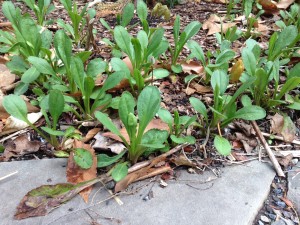Column updated April 1, 2021
Hello fellow readers, Divide and multiply, and while you’re at it, why not move those that may be better living somewhere else. Of course, I am referring to dividing and moving perennials, not family members :^) Sally from Wind Gap asked if spring is a good time to tackle the task.
When to divide perennials
Some say it’s best to divide spring and summer blooming perennials in the fall and fall bloomers in the spring so all of the plant’s energy can go to root and leaf development rather than flowering. I’d say most perennials recover best if divided in early spring, just as new growth is emerging. The root systems are full of stored energy, and they are less likely to suffer physical damage and leaf evaporation than when fully developed.
While there are many spring to-dos, this is one that I marvel at. Making more of what you have without spending money is like finding a bargain. Sharing with others adds to the delight! And, it rejuvenates the old and keeps multiplying plants under control.
How to divide perennials
Before you dig up your plant, water thoroughly and prepare the hole or giveaway pot where the division is going; choose a cloudy, chilly day- ideally when light rain is in the forecast to keep roots from drying out. There are two basic ways of dividing perennials. Firm, dense roots like hosta or ornamental grasses will need to be cut apart with a sharp knife or spade. Tangled and fibrous roots or clumps can be teased apart by hand or with two garden forks placed back-to-back then pulled gently apart.
Speaking of ornamental grasses, I’ve noticed some have yet to cut down those left standing for winter interest. While usually best to cut close to the ground in March, late doers should cut just above where the new blades have sprouted not to disfigure. Hedge trimmers or chain saw for those braver than I are perfect tools for the task. Times a wasting!
Garden Dilemmas? AskMaryStone@gmail.com (and now on your favorite Podcast App.)



